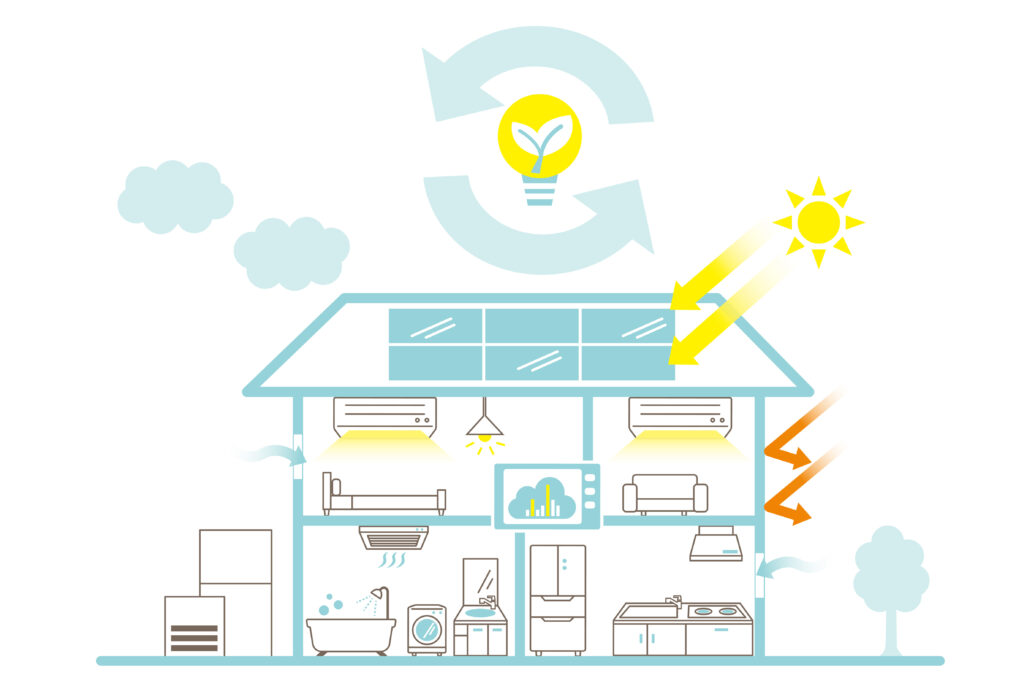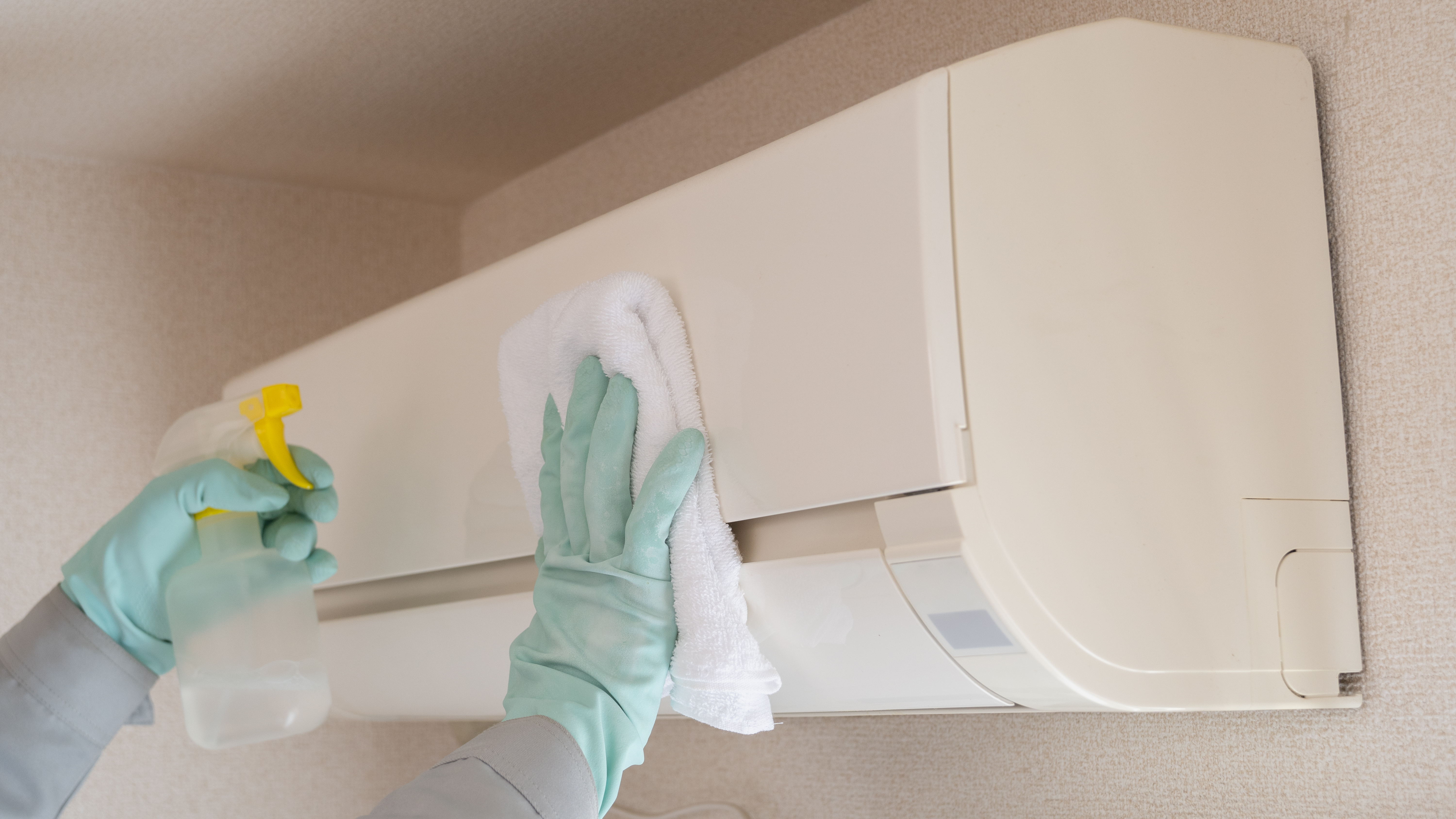In recent years, we’ve witnessed a significant shift towards eco-friendly living. This change has prominently impacted the air conditioning industry. Today, more of us are seeking air conditioning solutions that not only cool our homes efficiently but also do so with minimal environmental impact. The demand for greener, more sustainable air conditioning options is on the rise, and manufacturers are responding with innovative, eco-friendly designs. These new models are not just a nod to environmental concerns; they represent a major leap forward in technology and efficiency.

Innovation in Eco-Friendly Air Conditioning
We are now seeing air conditioning units that are markedly different from their predecessors. These modern units are designed with energy efficiency at their core. They utilize advanced technologies like inverter compressors, which adjust cooling output to suit actual needs, drastically reducing energy consumption. Additionally, many newer models are embracing refrigerants with a lower global warming potential, a critical step in reducing the carbon footprint of air conditioning systems. We are not just cooling our spaces; we’re doing it smarter and with a greater sense of responsibility towards our planet.
Benefits of Choosing Eco-Friendly Air Conditioning
Choosing an eco-friendly air conditioning system offers several benefits. Firstly, we are contributing to a greener planet, which is a responsibility we all share. Secondly, these systems are often more energy-efficient, meaning we can enjoy lower energy bills. This efficiency does not come at the cost of performance; in fact, many eco-friendly models are superior in terms of cooling effectiveness and operational lifespan. Furthermore, as awareness grows and technology advances, we are finding that the cost of eco-friendly air conditioning units is becoming increasingly competitive, making them an excellent long-term investment for our homes and offices.
The Future is Green
The future of air conditioning is undoubtedly green. With each passing year, we see more advancements that make eco-friendly air conditioning more accessible and effective. Governments are also playing their part, with many introducing regulations and incentives to encourage the adoption of greener technologies. As consumers, we have the power to drive this change even further. By choosing eco-friendly air conditioning options, we are making a statement about the kind of world we want to live in. We are choosing a path that respects and preserves our environment, ensuring a healthier planet for future generations.
A Collective Effort
Our collective efforts in choosing eco-friendly air conditioning solutions are making a difference. Manufacturers are continually pushed to innovate and produce more sustainable products. This cycle of demand and innovation is fostering a market where eco-friendly options are becoming the norm rather than the exception. We are part of a growing community that values sustainability, and our choices in air conditioning are a reflection of this commitment. Every eco-friendly air conditioning unit installed is a step towards a greener, more sustainable future.
Key Features of Environmentally Friendly AC Units
When we talk about environmentally friendly air conditioning, energy efficiency is at the forefront. The most significant feature of these eco-friendly AC units is their ability to cool spaces using less energy. This is achieved through advanced technologies like inverter compressors and programmable thermostats. These features enable the air conditioning units to adjust their cooling output based on real-time requirements, thereby avoiding unnecessary energy use. This not only helps us save on energy bills but also reduces our carbon footprint, making a significant impact on the environment.
Use of Eco-Friendly Refrigerants
Another key aspect of green air conditioning units is the use of eco-friendly refrigerants. Traditional air conditioning systems often use refrigerants that are harmful to the environment, particularly in terms of ozone depletion and global warming potential. However, the latest eco-friendly models are equipped with refrigerants that have a lower environmental impact. These newer refrigerants help in reducing the greenhouse effect and ozone layer depletion, contributing to a healthier planet. By choosing air conditioning units with eco-friendly refrigerants, we are taking a responsible step towards protecting our environment.
Smart Technology Integration
Modern eco-friendly air conditioning units often come integrated with smart technology. This includes features like Wi-Fi connectivity, allowing us to control our AC units remotely via smartphones or tablets. Such technology not only provides convenience but also enhances energy efficiency. For instance, we can easily adjust temperature settings or switch off the air conditioning when it’s not needed, even when we’re not at home. This level of control helps us to use our air conditioning systems more efficiently, reducing unnecessary energy consumption and contributing to environmental sustainability.
Programmable Thermostats
Programmable thermostats are a game-changer in eco-friendly air conditioning. These thermostats allow us to set temperature schedules according to our daily routines. For example, we can program the AC to switch off automatically when we’re not at home or during cooler parts of the day. This prevents the air conditioning from running unnecessarily, thus conserving energy. Moreover, some advanced models learn our preferences and adjust settings automatically, optimizing comfort while minimizing energy use.
Improved Air Quality Features
We often overlook the fact that air conditioning is not just about cooling; it’s also about air quality. Eco-friendly air conditioning units frequently come with enhanced air filtration systems. These systems are designed to filter out pollutants, allergens, and other harmful particles from the air, providing us with cleaner and healthier indoor air. This feature is particularly beneficial for those of us with allergies or respiratory issues. By choosing an air conditioning unit with advanced air filtration, we’re not only ensuring a comfortable temperature but also a healthier living environment.
Durable and Sustainable Design
Durability is a key feature of environmentally friendly air conditioning units. Manufacturers are increasingly focusing on building AC units that are not only efficient but also long-lasting. This means using high-quality, sustainable materials that can withstand wear and tear over time. A durable air conditioning unit doesn’t just mean fewer repairs and replacements; it also means less waste and a lower environmental impact in the long run. By opting for durable and sustainably designed air conditioning units, we are making a wise investment for both our comfort and the planet.
Installation Tips for Maximizing Efficiency in Air Conditioning
When we think about installing an air conditioning unit, the location is crucial for maximizing efficiency. It’s important to select a spot where airflow isn’t obstructed by furniture or curtains. We should also ensure the unit isn’t exposed to direct sunlight, as this can cause it to work harder, reducing its efficiency. Ideally, the air conditioning unit should be placed in a central location to evenly distribute cool air throughout the space. This strategic placement not only enhances the effectiveness of the unit but also helps in reducing energy consumption.
Proper Insulation: A Key to Efficiency
Another vital aspect to consider during installation is insulation. Proper insulation in our homes ensures that the cool air produced by the air conditioning unit stays inside. This means checking and sealing any gaps around windows and doors. We should also consider the insulation in our walls and attic, as these areas can contribute to significant heat gain. By ensuring our homes are well-insulated, we can prevent our air conditioning units from overworking, thus enhancing their efficiency and lifespan.
Correct Sizing of the Air Conditioning Unit
The size of the air conditioning unit is another critical factor in maximizing efficiency. A unit that is too large for the space can lead to unnecessary energy consumption, while one that is too small will struggle to cool the area effectively. We should consult with professionals to determine the correct size based on the square footage of our space and other factors like ceiling height and window size. The right-sized air conditioning unit will operate more efficiently, providing optimal cooling while keeping energy costs down.
Regular Maintenance for Optimal Performance
Once our air conditioning unit is installed, regular maintenance is essential to keep it running efficiently. This includes cleaning or replacing filters every few months, as a dirty filter can restrict airflow and reduce the unit’s efficiency. We should also have a professional inspect the unit annually to ensure everything is functioning correctly. Regular maintenance not only maximizes the efficiency of our air conditioning unit but also prolongs its lifespan, saving us money in the long run.
Utilizing Programmable Thermostats
Installing a programmable thermostat can significantly enhance the efficiency of our air conditioning system. This smart device allows us to set specific temperatures for different times of the day. For example, we can program the thermostat to maintain a higher temperature when we’re not home and cool the space before we return. This prevents the air conditioning unit from running unnecessarily, thus reducing energy consumption and lowering our bills.
Understanding and Managing Air Flow
Managing airflow is a critical aspect of maximizing air conditioning efficiency. We should ensure that the vents are not blocked by furniture or other objects. It’s also beneficial to use ceiling fans in conjunction with our air conditioning units. Ceiling fans help circulate cool air more effectively, allowing us to set the air conditioner at a higher temperature without compromising on comfort. This collaborative approach can significantly reduce the workload on our air conditioning unit and enhance its efficiency.
Maintenance Best Practices for Eco-Friendly Air Conditioning Systems
To ensure our eco-friendly air conditioning systems function at their best, regular cleaning is essential. Dust and debris can accumulate in filters, vents, and internal components, hindering performance. We should aim to clean or replace filters every few months. This not only enhances the air quality in our homes but also ensures that our air conditioning units don’t have to work overtime to push air through clogged filters. A clean system operates more efficiently, using less energy and thereby reducing our carbon footprint.

Professional Servicing: A Must for Optimal Performance
While regular cleaning can be managed by us, professional servicing is key to maintaining the efficiency of our eco-friendly air conditioning units. We recommend scheduling a professional service at least once a year. During these check-ups, technicians can identify and rectify potential issues like refrigerant leaks or electrical problems that we might overlook. Professional servicing ensures that all components of our air conditioning system are in top condition, preventing energy wastage and prolonging the unit’s lifespan.
Monitoring and Adjusting Thermostat Settings
The thermostat plays a crucial role in the efficiency of our air conditioning systems. We should regularly check and adjust the thermostat settings to suit our needs and external temperatures. Over-cooling not only wastes energy but also puts unnecessary strain on the air conditioning system. By setting the thermostat to a comfortable, consistent temperature, we can reduce energy consumption and ensure our system runs efficiently. Smart thermostats can be particularly helpful, allowing us to program and adjust settings remotely for optimal efficiency.
Ensuring Adequate Insulation
Insulation is often overlooked when it comes to maintaining air conditioning systems. Proper insulation in our homes helps in maintaining the desired temperature, reducing the workload on our air conditioning units. We should check for drafts around windows and doors and ensure that our walls and roof are adequately insulated. This prevents cool air from escaping and hot air from entering, thereby enhancing the efficiency of our air conditioning system.
Checking and Sealing Ductwork
The ductwork of our air conditioning system is crucial for efficient airflow. Leaks or gaps in the ductwork can lead to significant energy loss. We should periodically inspect our ducts for any signs of leaks and seal them if necessary. This not only improves the efficiency of our air conditioning system but also ensures that cool air is evenly distributed throughout our space.
Upgrading to Energy-Efficient Components
As technology evolves, so do the components of our air conditioning systems. We should consider upgrading to energy-efficient parts, such as programmable thermostats, energy-efficient motors, or advanced air filters. These upgrades can significantly improve the efficiency of our air conditioning systems, leading to lower energy consumption and reduced environmental impact.
Managing Sun Exposure and Ventilation
The positioning of our homes and the amount of sun exposure can affect the efficiency of our air conditioning systems. Using blinds or curtains during the hottest part of the day can help in reducing heat build-up. Similarly, ensuring proper ventilation in our homes can aid in maintaining a consistent temperature, reducing the need for constant air conditioning.

